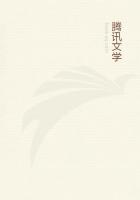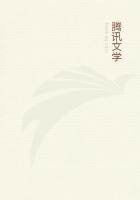Another advantage results from the snippets of unequal size. The three or four outer pieces, which are the first placed in position, being the longest of all, project beyond the mouth, whereas the next, being shorter, do not come quite up to it. A brim is thus obtained, a ledge on which the round disks of the lid rest and are prevented from touching the honey when the Bee presses them into a concave cover. In other words, at the mouth the circumference comprises only one row of leaves; lower down it takes two or three, thus restricting the diameter and securing an hermetic closing.
The cover of the pot consists solely of round pieces, very nearly alike and more or less numerous. Sometimes I find only two, sometimes I count as many as ten, closely stacked. At times, the diameter of these pieces is of an almost mathematical precision, so much so that the edges of the disk rest upon the ledge. No better result would be obtained had they been cut out with the aid of compasses. At times, again, the piece projects slightly beyond the mouth, so that, to enter, it has to be pressed down and curved cupwise. There is no variation in the diameter of the first pieces placed in position, those nearest to the honey. They are all of the same size and thus form a flat cover which does not encroach on the cell and will not afterwards interfere with the larva, as a convex ceiling would. The subsequent disks, when the pile is numerous, are a little larger;they only fit the mouth by yielding to pressure and becoming concave.
The Bee seems to make a point of this concavity, for it serves as a mould to receive the curved bottom of the next cell.
When the row of cells is finished, the task still remains of blocking up the entrance to the gallery with a safety-stopper similar to the earthen plug with which the Osmia closes her reeds. The Bee then returns to the free and easy use of the scissors which we noticed at the beginning when she was fencing off the back part of the Earth-worm's too deep burrow; she cuts out of the foliage irregular pieces of different shapes and sizes and often retaining their original deeply-indented margins; and with all these pieces, very few of which fit at all closely the orifice to be blocked, she succeeds in ****** an inviolable door, thanks to the huge number of layers.
Let us leave the Leaf-cutter to finish depositing her eggs in other galleries, which will be colonized in the same manner, and consider for a moment her skill as a cutter. Her edifices consist of a multitude of fragments belonging to three categories: oval pieces for the sides of the cells; round pieces for the lids; and irregular pieces for the barricades at the front and back. The last present no difficulty: the Bee obtains them by removing from the leaf some projecting portion, as it stands, a serrate lobe which, owing to its notches, shortens the insect's task and lends itself better to scissor-work. So far, there is nothing to deserve attention: it is unskilled labour, in which an inexperienced apprentice might excel.
With the oval pieces, it becomes another matter. What model has the Megachile when cutting her neat ellipses out of the delicate material for her wallets, the robinia-leaves? What mental pattern guides her scissors? What system of measurement tells her the dimensions? One would like to picture the insect as a living pair of compasses, capable of tracing an elliptic curve by a certain natural inflexion of its body, even as our arm traces a circle by swinging from the shoulder. A blind mechanism, the mere outcome of its organization, would alone be responsible for its geometry. This explanation would tempt me if the large oval pieces were not accompanied by much smaller ones, also oval, which are used to fill the empty spaces. Apair of compasses which changes its radius of its own accord and alters the curve according to the plan before it appears to me an instrument somewhat difficult to believe in. There must be something better than that. The circular pieces of the lid suggest it to us.
If, by the mere flexion inherent in her structure, the Leaf-cutter succeeds in cutting out ovals, how does she succeed in cutting out rounds? Can we admit the presence of other wheels in the machinery for the new pattern, so different in shape and size? Besides, the real point of the difficulty does not lie there. These rounds, for the most part, fit the mouth of the jar with almost exact precision.
When the cell is finished, the Bee flies hundreds of yards away to make the lid. She arrives at the leaf from which the disk is to be cut. What picture, what recollection has she of the pot to be covered? Why, none at all: she has never seen it; she does her work underground, in utter darkness! At the utmost, she can have the indications of touch: not actual indications, of course, for the pot is not there, but past indications, useless in a work of precision.
And yet the disk to be cut out must have a fixed diameter: if it were too large, it would not go in; if too small, it would close badly, it would slip down on the honey and suffocate the egg. How shall it be given its correct dimensions without a pattern? The Bee does not hesitate for a moment. She cuts out her disk with the same celerity which she would display in detaching any shapeless lobe that might do for a stopper; and that disk, without further measurement, is of the right size to fit the pot. Let whoso will explain this geometry, which in my opinion is inexplicable, even when we allow for memory begotten of touch and sight.
One winter evening, as we were sitting round the fire, whose cheerful blaze unloosed our tongues, I put the problem of the Leaf-cutter to my family:














